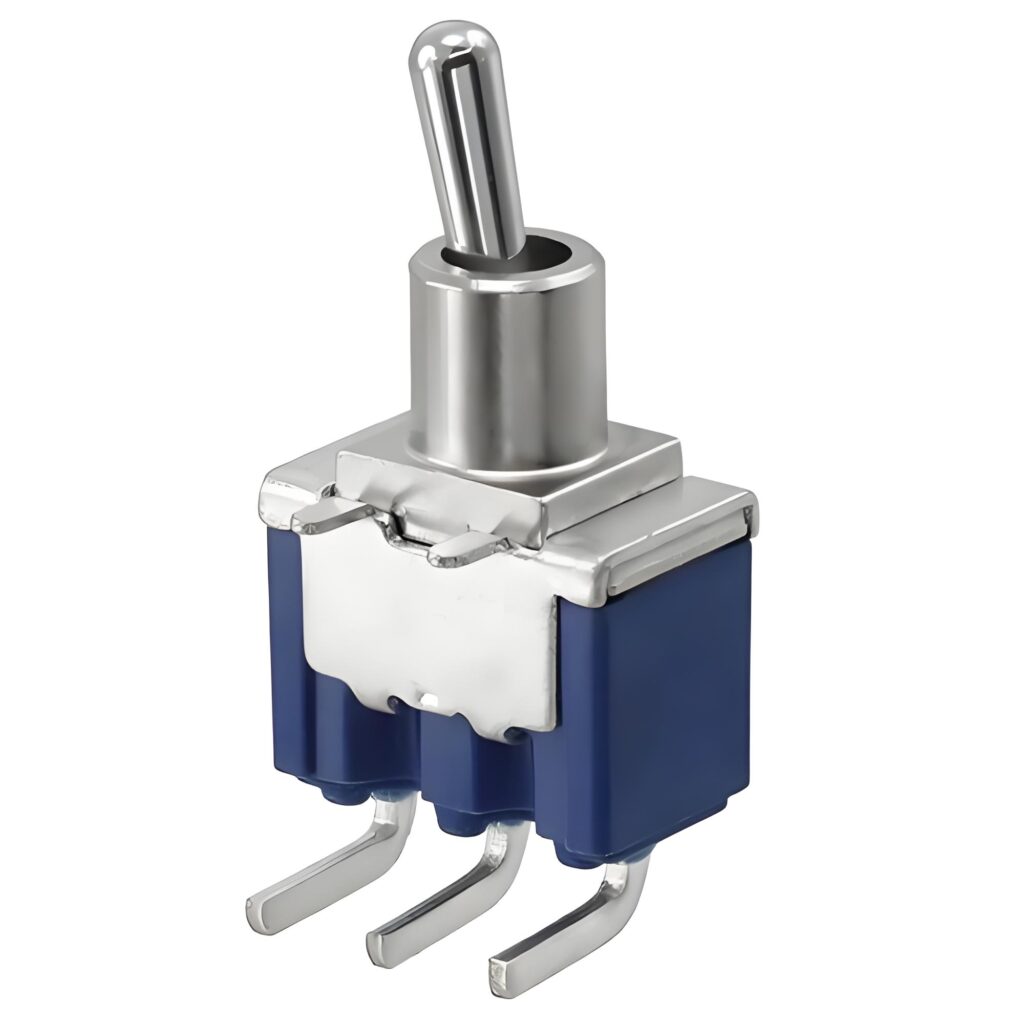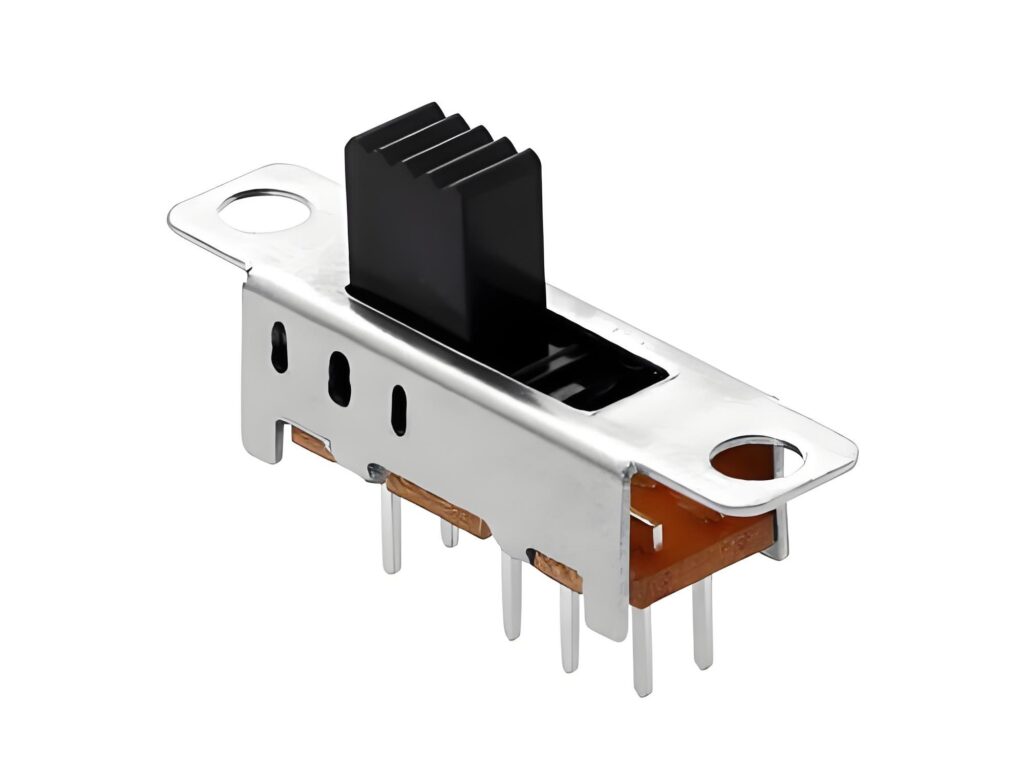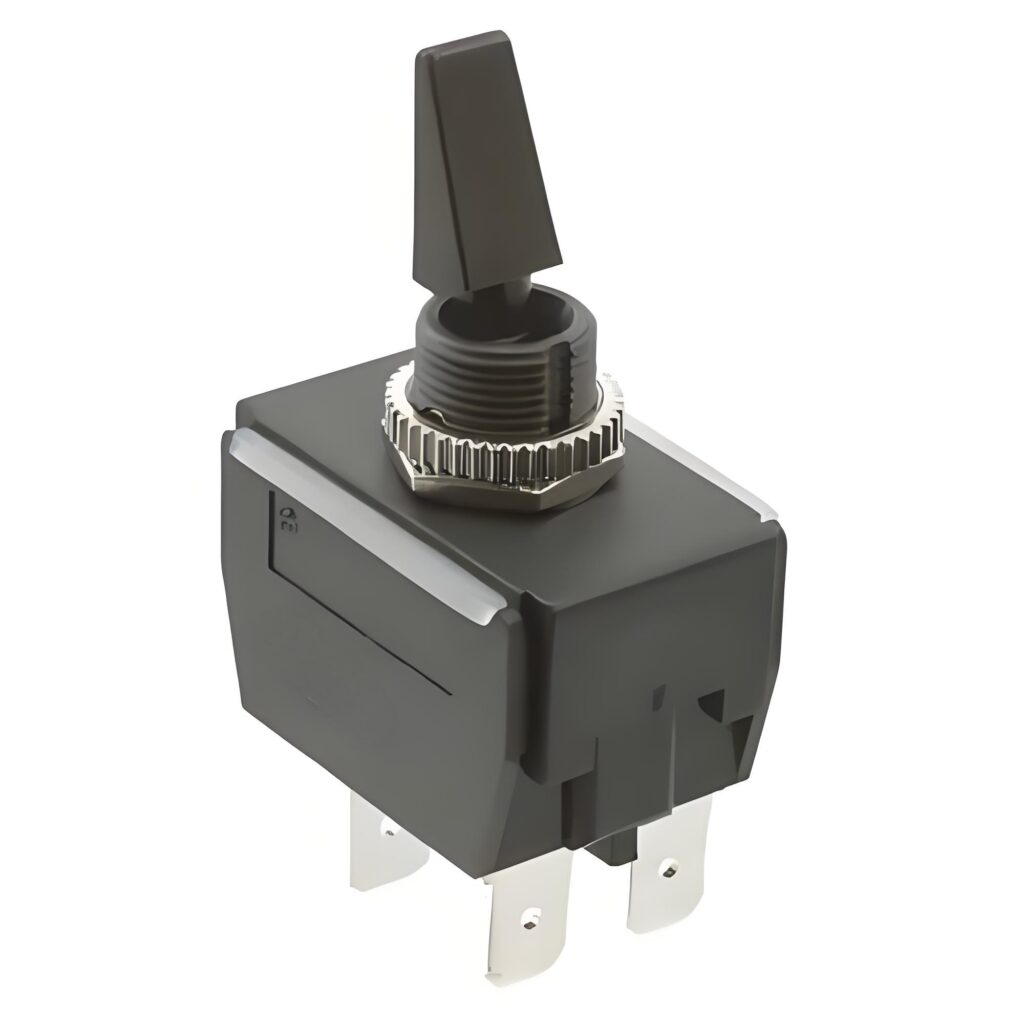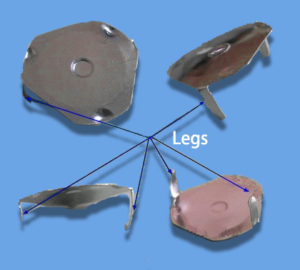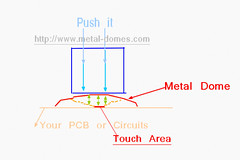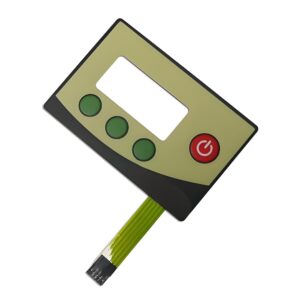Toggle switch is a switch that switches a circuit on and off by toggling it. Users can switch the circuit state by toggling the switch. Toggle switches are widely used in various electronic devices, such as power switches, mode selection switches, etc. They have a simple design, intuitive operation, and can provide stable circuit control, making them suitable for scenarios that require frequent switching of functions.
What is a toggle switch?
Toggle switch is a type of electrical switch that is operated by a lever, handle, or rocker. When you flip or push this lever, the circuit either opens or closes. In simpler terms, it turns things on or off.
This movement is often quick, solid, and gives a satisfying “click.” That sound and feel come from an internal mechanical snap mechanism.
Toggle switches can control everything from lights to engines. They may look simple, but inside, they’re built to withstand thousands—even millions—of operations.
Some are tiny, built for electronics. Others are rugged, made for marine or industrial use. They come in different sizes, styles, and functions.
What is the difference between a toggle switch and a standard switch?
From rocker switches to push buttons, there are countless designs. A standard switch is a broad term that includes many of these types. A toggle switch is one specific kind.
Here’s what makes toggle switches stand out:
- Physical movement: You flip or push a toggle. The lever sticks out, making it easy to grip.
- Tactile feedback: Most toggle switches provide a physical “click” when operated.
- Visible position: It’s easy to see whether it’s ON or OFF.
- Durability: Toggle switches are often built tougher than other switch types.
Standard wall switches for lights in your home can be rocker or paddle types. But toggle switches remain popular because of their durability and reliability, especially in more demanding environments.
What are the types of toggle switches?
Not all toggle switches are created equal. They come in many forms based on their function, design, and use-case.
- 1. On-Off Toggle Switches
This is the simplest type. You flip the switch one way to turn it on, flip it the other way to turn it off.
- 2. Momentary Toggle Switches
This type only stays on while you hold it. The moment you release it, it returns to its original position. Think of a car horn or reset switch.
- 3. Double Pole Toggle Switches
These control two circuits at once. Perfect for applications where you need to power two devices or control two actions with one switch.
- 4. Three-Position Toggle Switches
This switch has a center OFF position, and two ON positions (up and down). It’s great for selecting between functions—like fan speed or mode control.
- 5. Push Button Toggle Switch
A newer twist on the classic toggle, this type adds a spring-loaded push button for action. You press instead of flip, but it still toggles between states.
- 6. Waterproof Toggle Switches
Designed with sealed components, they resist water and dust. These are ideal for marine toggle switches or outdoor use.
Each type fits a different application. The right one depends on your needs: simplicity, safety, or specialized function.
How do toggle switches work?
The mechanics are simple but brilliant. Inside a toggle switch is a lever connected to a contact point. When you flip the lever, the contact moves to either complete or break the circuit.
Most toggle switches use snap-action. This means when the lever passes a certain point, the internal spring mechanism snaps the contacts into place. This gives that crisp click and reduces wear.
Some toggles use single pole single throw (SPST) or double pole double throw (DPDT) circuits. These determine how many circuits the switch controls and how complex the switching logic is.
In marine or automotive toggle switches, additional protective layers ensure they resist vibration, moisture, and extreme conditions.
How do I identify a toggle switch?
Sometimes, toggle switches look similar to other switches. So how can you tell?
- Look for the lever: A small handle or stick that flips up and down is the key feature.
- Check movement: If it stays in place after you flip it, it’s likely a toggle.
- Listen: Most give a noticeable click.
- Inspect terminals: On the back or underside, you’ll find connection points marked as ON, OFF, or COM (common).
Most switches will also have specifications printed on them, like voltage, amperage, or weather resistance. This helps you match the right switch to your application.
What is an example of a common toggle switch?
Some classic examples include:
- Light switches in older homes: That classic flick-up flick-down switch? That’s a toggle.
- Dashboard controls in cars and boats: Especially for headlights, fog lights, or cabin lights.
- Power tools: Some drills and saws still use toggle switches to control power.
- Aviation panels: Pilots rely on rows of toggles to operate systems quickly.
One highly recognized area is boat toggle switches. Marine environments need robust, sealed switches that can handle splashes and corrosion. This is where high quality toggle switches with waterproofing become essential.
Where are toggle switches used?
Toggle switches are everywhere. Their wide application is a testament to their reliability.
- Automotive: Automotive toggle switches control headlights, auxiliary lights, winches, and more.
- Marine: Marine toggle switches are used in boats for navigation lights, bilge pumps, and radios. These need to be waterproof toggle switches to survive salt, water, and sun.
- Home Electrical: You’ll find them controlling lighting, fans, and appliances. While modern homes may use rocker switches, toggle switches for home use are still very common.
- Industrial Control Panels: Factories use toggle switches to start or stop machinery, set operating modes, and trigger emergency systems.
- Electronics: Mini toggle switches help in small electronic devices or prototype boards. They allow precise manual control in circuits.
- Outdoor Applications: Thanks to their ruggedness, toggle switches are used in garden lighting, outdoor equipment, and construction gear.
Conclusion:
Toggle switches may be small, but their role is huge. From lighting up homes to powering cars and keeping boats safe, they do their job quietly but effectively. Whether it’s a switch toggle switch for your living room, a waterproof toggle switch for your boat, or a momentary toggle for your workshop, these devices offer control, safety, and simplicity.




